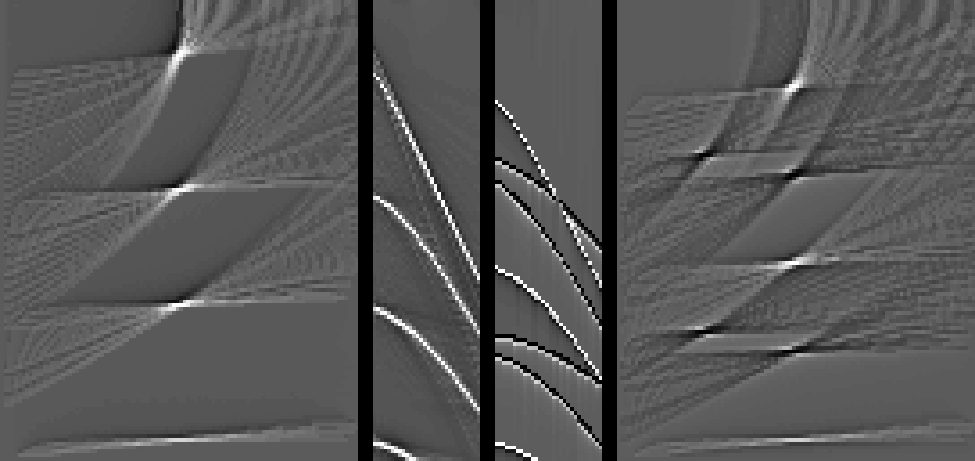To get smoother results
I took the time axis to be continuous
and the signal value at (t,x)
to be distributed between the two points
![]() and
and
![]() .The two time points
.The two time points ![]() and the x-value
are mapped to two slownesses
and the x-value
are mapped to two slownesses ![]() .The signal from the (t,x)-pixel is sprayed into the horizontal line
.The signal from the (t,x)-pixel is sprayed into the horizontal line
![]() .To enable you to reproduce the result,
I include the program below:
.To enable you to reproduce the result,
I include the program below:
subroutine vspray( conj, nt,dt,t0, nx,dx,x0, tx, ns,ds,s0, zs)
integer conj, it, nt, iz, nz, ix, nx, is, ns, isp, ism
real tx(nt,nx), zs(nt,ns), scale
real z,dz,z0, t,dt,t0, x,dx,x0, s,ds,s0, sm,sp, xm,xp, tm,tp
nz=nt; dz=dt; z0=t0;
if( conj == 0 ) { do is=1,ns; do iz=1,nz; zs(iz,is) = 0.}
else { do ix=1,nx; do it=1,nt; tx(it,ix) = 0.}
if( conj == 0) { do ix=1,nx; call halfdif ( 1, nt, tx(1,ix), tx(1,ix) )}
do iz= 1, nz { z = z0 + dz*(iz-1)
do ix= 1, nx { x = x0 + dx*(ix-1)
do it= iz, nt { t = t0 + dt*(it-1)
tm = t-dt/2; xm = x
tp = t+dt/2; xp = x
sm = (tm**2 -z**2)/xp**2; ism = 1.5+(sm-s0)/ds
sp = (tp**2 -z**2)/xm**2; isp = 1.5+(sp-s0)/ds
if( ism<2 ) next
if( isp>ns) next
scale = sqrt( t / (1.+isp-ism) ) / x
do is= ism, isp {
if( conj == 0)
zs(iz ,is) = zs(iz ,is) + tx(it ,ix) * scale
else
tx(it ,ix) = tx(it ,ix) + zs(iz ,is) * scale
}
} } }
if( conj != 0) { do ix=1,nx; call halfdif ( 0, nt, tx(1,ix), tx(1,ix) )}
return; end
Figure 5 shows the result on the same inputs as in Figures 3 and 4.
 |